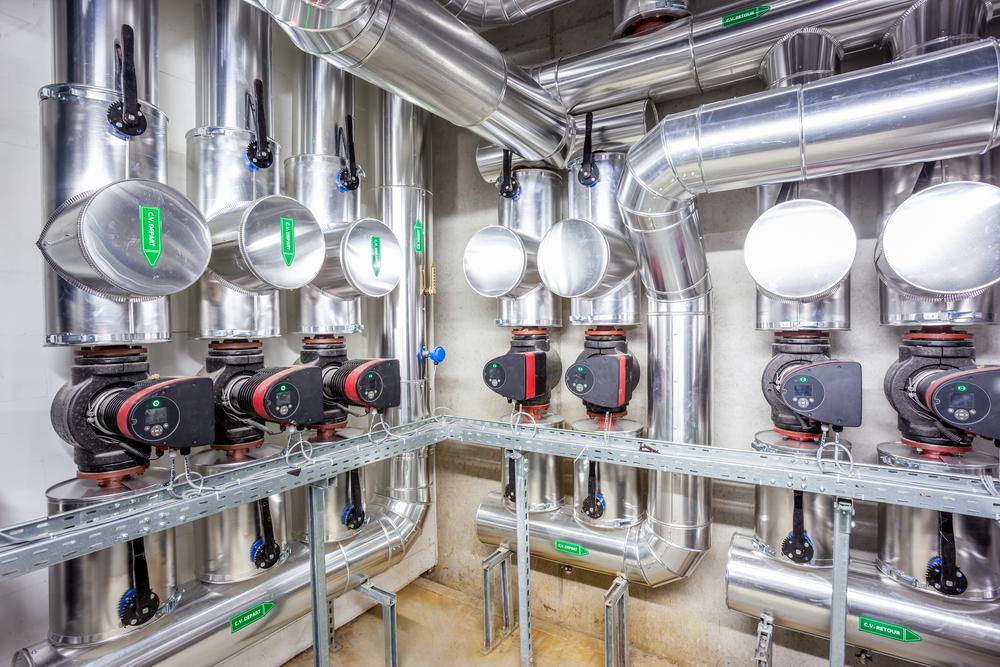A heating system can refer to a wide variety of installations because the phrase has such a broad definition. While some heating systems rely on the combustion of fuel to generate heat, others use electricity. The method by which heat enters indoor spaces also varies; whereas some systems heat indoor air directly, others employ a middle fluid, such as water or steam.
Boilers, furnaces, space heaters, and heat pumps are the most prevalent types of heating systems. Every option in an engineering decision includes benefits and drawbacks.
Boilers:
Boilers heat a fluid that travels via piping, and heat exchangers subsequently transmit the heated fluid's energy to the interior air. The fluid is often steam or hot water; steam heats radiators while hot water uses fan coils to distribute heat.
Hot water is regarded as the most economical heating fluid for boilers in current applications. When a building uses steam for purposes other than heating, such as manufacturing activities, steam heating is a possible option. Mechanical experts will typically advise hot water distribution when a boiler will solely be utilised for space heating.
The fuels that boilers consume can also be used to classify them. The following are some instances of how costs and emissions vary between various fuels:
- For boilers, natural gas is a popular and affordable fuel. There is no need to plan fuel supplies by truck because it is delivered as a utility service.
- In the Northeastern US, heating oil is still another popular choice. Although it is more expensive than natural gas, it is still an efficient fuel. Building owners must arrange delivery of heating oil because it can only be supplied by truck and must be kept in stock.
- When the owner has access to significant quantities of organic waste that can be converted into biofuels, biomass is a practical fuel for boilers. When biogas or biodiesel must be acquired from a third party supplier, biomass heating can be quite expensive.
- Boiler fuel can also be made out of propane. Like heating oil, it needs to be delivered by truck but is more efficient and produces fewer emissions.
Furnaces:
Boilers and furnaces both use the same energy sources, which leads to frequent confusion between the two equipment categories. The primary distinction is that while boilers provide indirect heating with hot water or steam, furnaces heat interior air directly.
Boilers are more complex and expensive to install than furnaces, but keep in mind that forced airflow alone provides heat. For vertical lengths, water is a more efficient medium than warm air, and hydronic piping is more condensed than air ducts. Furnaces can be noisy as well since they need strong fans to create the necessary airflow.
Space Heaters:
Space heaters are a popular choice when building regions need autonomous heating, as opposed to the boilers and furnaces used in central heating systems. Since they heat interior air directly through the combustion of fuel or electrical resistance, space heaters function somewhat similarly to furnaces.
· Electric space heaters are portable and convenient because they draw power from a building's electrical system. Despite their modest initial cost, space heaters are expensive to operate.
· Although gas-fired space heaters are more affordable to run, they need a gas source. Since enclosed combustion produces toxic byproducts for people, carbon monoxide in particular can be fatal, they must be adequately vented.
Conclusion:
There are many different kinds of heating systems, and the suggested equipment varies based on the building requirements and the available budget. The traditional options include furnaces and boilers, but heat pumps are also becoming a practical heating option.
Although heat pumps may frequently match the heating cost of fuels, combustion heating typically achieves a lower operating cost than electric resistance heating. Boilers can adapt to various applications, but furnaces are typically more cheap when comparing the two.
